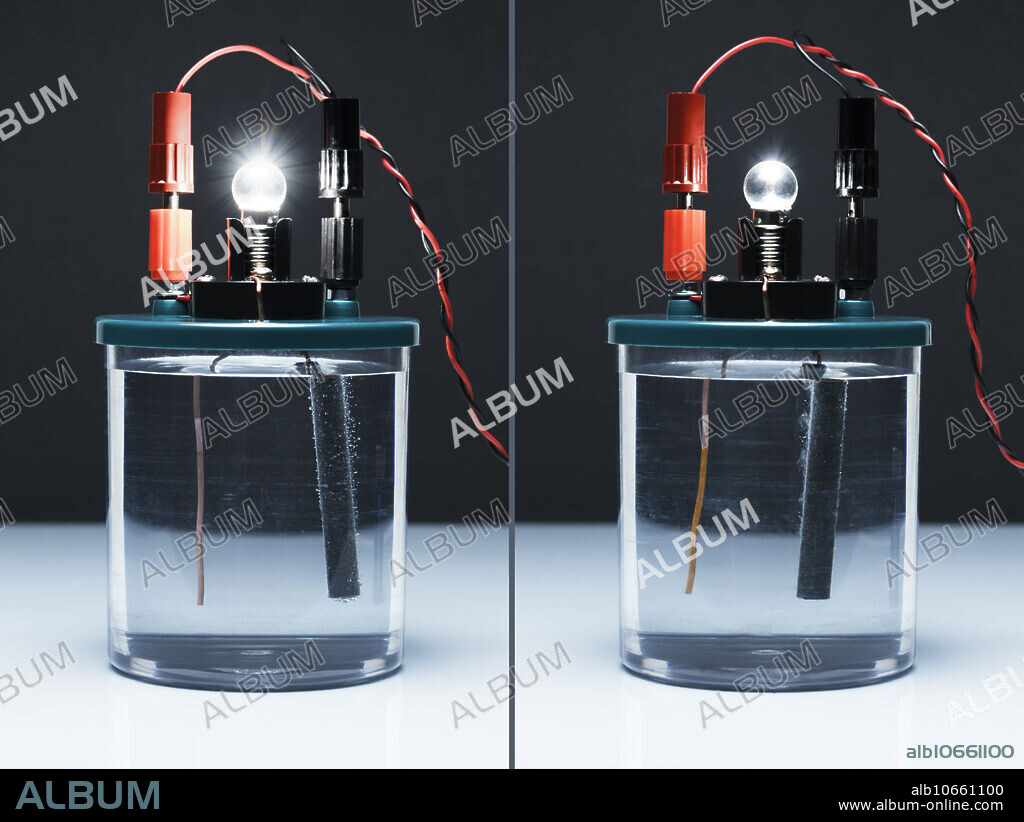alb10661100
Electrical conductivity comparison

|
Add to another lightbox |
|
Add to another lightbox |



Buy this image.
Select the use:

Title:
Electrical conductivity comparison
Caption:
Electrical conductivity comparison. A solution conducts electric current when it contains charged particles (ions). A circuit consisting of a battery, two electrodes (copper and graphite) in a jar, and a light bulb is used to test electrical conductivity of different solutions. When the jar is filled with 0.1 M hydrochloric acid (HCl), the bulb lights up brightly (left frame). Hydrochloric acid is a strong acid and a strong electrolyte, it completely dissociates into H+ and Cl- ions that carry electric charges in the solution. When the jar is filled with 0.1 M acetic acid (CH3COOH), the bulb lights up but less brightly than with hydrochloric acid (right frame). Acetic acid is a weak organic acid and a weak electrolyte, it only partially dissociates into H+ and CH3COO- ions. Therefore, for the same molar concentration, acetic acid produces a lower concentration of ions needed to carry electric charges in the solution.
Credit:
Album / Turtle Rock Scientific/Science Source
Releases:
Image size:
5800 x 4356 px | 72.3 MB
Print size:
49.1 x 36.9 cm | 19.3 x 14.5 in (300 dpi)
Keywords:
ACETIC • ACID • BULB • CH3COOH • CHEMICAL • CHEMISTRY • CIRCUIT • CONDUCTIVITY • CONDUCTOR • CURRENT • DISSOCIATION • ELECTRIC • ELECTRIC-LIGHT • ELECTRICAL • ELECTRICITY • ELECTROCHEMICAL • ELECTROCHEMISTRY • ELECTRODE • ELECTROLYTE • ETHANOIC • FLASK • GLOBE • HCL • HYDROCHLORIC • INCANDESCENT • ION • IONIC • JAR • LAMP • LIGHT BULB • LIGHT • LIGHTBULB • PHYSICAL • PHYSICS • SOLUTION • STRONG • VINEGAR • WEAK
 Pinterest
Pinterest Twitter
Twitter Facebook
Facebook Copy link
Copy link Email
Email
